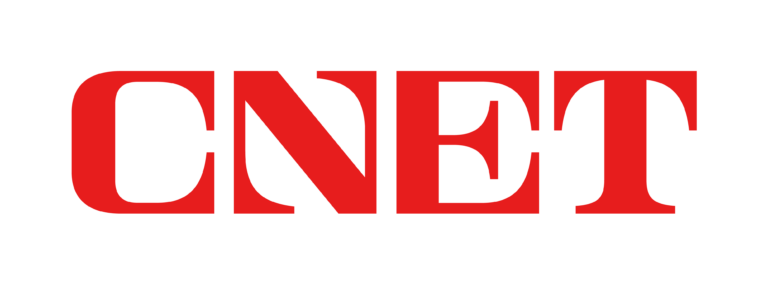
Sergey Chayko/Getty Images
Key takeaways
- Today’s top CDs offer APYs up to 5.35%.
- With Fed rate cuts on the horizon, banks are starting to quietly lower CD rates.
- The sooner you lock in a high APY, the more interest you stand to earn.
Now’s the time to score a great rate on a certificate of deposit. With inflation finally cooling, the Federal Reserve is expected to start cutting the federal funds rates as early as September, and many banks have already begun lowering CD rates in anticipation.
Today’s top CDs allow you to lock in an annual percentage yield, or APY, of up to 5.35% — more than twice the national average for some terms. Here’s where you can find the best rates for a variety of CD terms.
Today’s best CD rates
Here are some of the top rates available on today’s best CDs, and how much you could earn by depositing $5,000 right now:
Experts recommend comparing rates before opening a CD account, to get the best APY possible. Enter your information below to get CNET’s partners’ best rate for your area.
Why CD rates are starting to fall
The Fed doesn’t directly set CD rates, but its actions have ripple effects. It regularly adjusts the federal funds rate to keep the economy in check, raising it when inflation is high and lowering it when inflation cools. This rate determines how much it costs banks to borrow and lend money to each other. So, when the Fed raises this rate, banks tend to raise APYs on consumer products like savings accounts and CDs to boost their cash reserves and stay competitive. When the Fed cuts this rate, APYs on these products drop, too.
Starting in March 2022, the Fed raised the federal funds rate 11 times to combat record-high inflation, and CD rates skyrocketed. But as inflation showed signs of cooling, the Fed paused rates seven times beginning with its September 2023 meeting. As a result, CD rates plateaued and have begun dropping as experts speculate on the Fed’s next moves.
Here’s where CD rates stand compared with last week:
| Term | CNET average APY | Weekly change* | Average FDIC rate | |
| 6 months | 4.69% | -0.21% | 1.98% | |
| 1 year | 4.94% | -0.20% | 1.82% | |
| 3 years | 4.11% | -0.24% | 1.78% | |
| 5 years | 3.98% | +1.01% | 1.43% |
*Weekly percentage increase/decrease from July 8, 2024, to July 15, 2024.
The timing of Fed rate cuts depends on where inflation stands when the Fed meets next. The latest Consumer Price Index report, which measures inflation rate changes, revealed inflation is down 0.1% year over year.
But whatever the Fed decides at its upcoming meetings, we’re already seeing several of the banks we track at CENT drop APYs across CD terms. And with Fed rate cuts on the horizon, this trend is likely to continue. In other words, locking in a high APY now could be a smart strategy.
“If the Fed reduces rates, CD interest rates will most likely start to decline as well,” said Faron Daugs, CFP, founder and CEO at Harrison Wallace Financial Group. “Should that happen, it would serve as an ideal time to secure a longer-term CD, provided it aligns with your needs and timeline for your financial goals. By doing so, you can lock in a higher rate for the duration of the CD before rates potentially drop.”
What to look for in a CD account
A competitive APY is important, but there are other things you should consider when comparing CDs to get the best product for your needs:
- When you’ll need your money: Early withdrawal penalties can eat into your interest earnings. So, be sure to choose a term that fits your savings timeline. Alternatively, you can select a no-penalty CD, although the APY may not be as high as you’d get with a traditional CD of the same term.
- Minimum deposit requirement: Some CDs require a minimum amount to open an account — typically, $500 to $1,000. Others don’t. How much money you have to set aside can help you narrow down your options.
- Fees: Maintenance and other fees can eat into your earnings. Many online banks don’t charge fees, because they have lower overhead costs than banks with physical branches. Still, read the fine print for any account you’re evaluating.
- Federal deposit insurance: Make sure any bank or credit union you’re considering is a member of the Federal Deposit Insurance Corp. or the National Credit Union Administration, so your money is protected if the bank fails.
- Customer ratings and reviews: Visit sites like Trustpilot to see what customers are saying about the bank. You want a bank that’s responsive, professional and easy to work with.
Methodology
CNET reviews CD rates based on the latest APY information from issuer websites. We evaluated CD rates from more than 50 banks, credit unions and financial companies. We evaluate CDs based on APYs, product offerings, accessibility and customer service.
The current banks included in CNET’s weekly CD averages are: Alliant Credit Union, Ally Bank, American Express National Bank, Barclays, Bask Bank, Bread Savings, Capital One, CFG Bank, CIT, Fulbright, Marcus by Goldman Sachs, MYSB Direct, Quontic, Rising Bank, Synchrony, EverBank, Popular Bank, First Internet Bank of Indiana, America First Federal Credit Union, CommunityWide Federal Credit Union, Discover, Bethpage, BMO Alto, Limelight Bank, First National Bank of America, Connexus Credit Union.




















+ There are no comments
Add yours